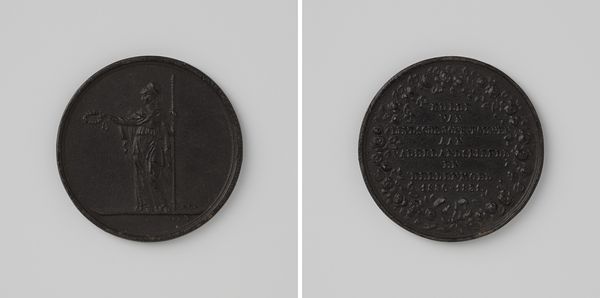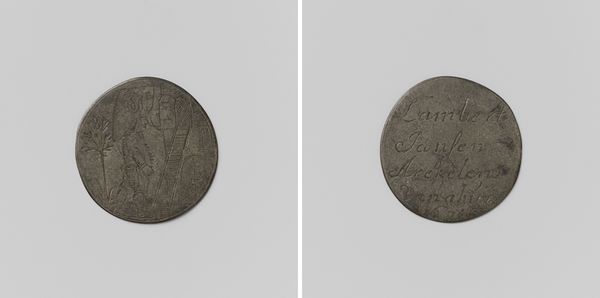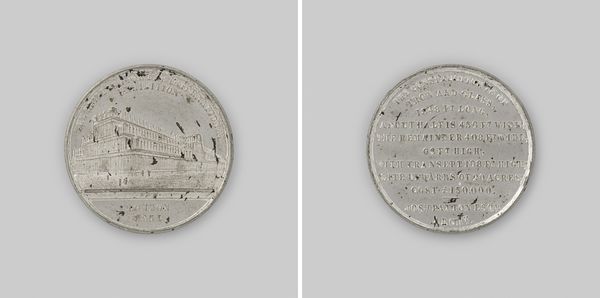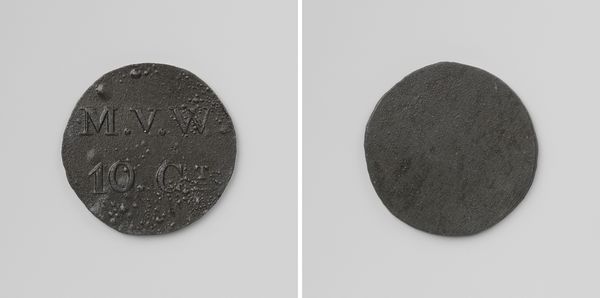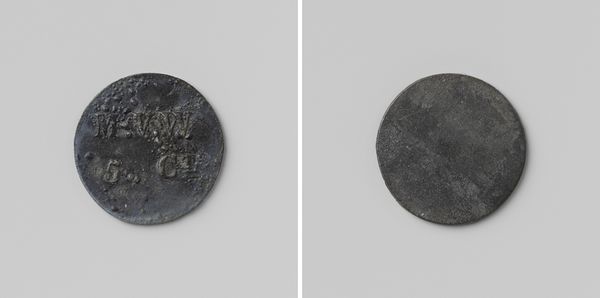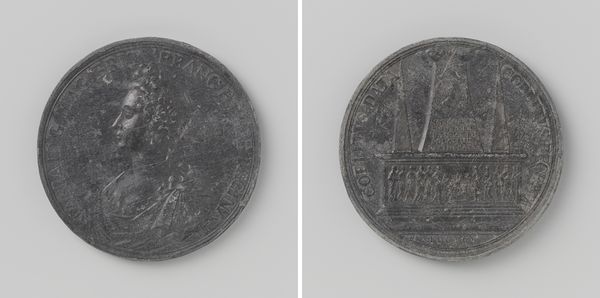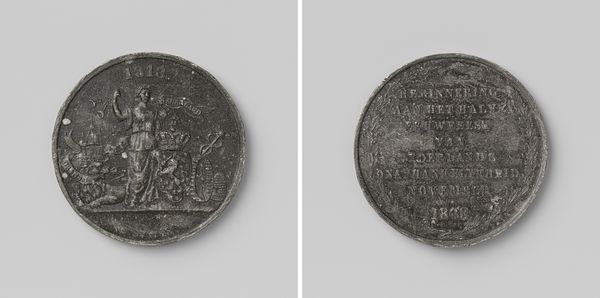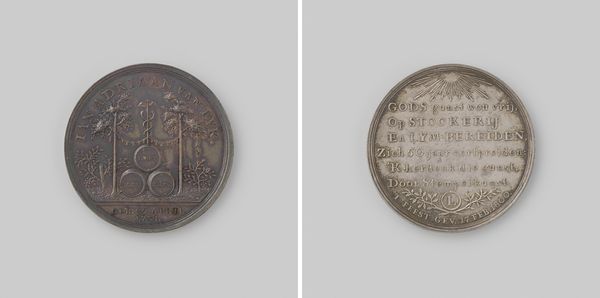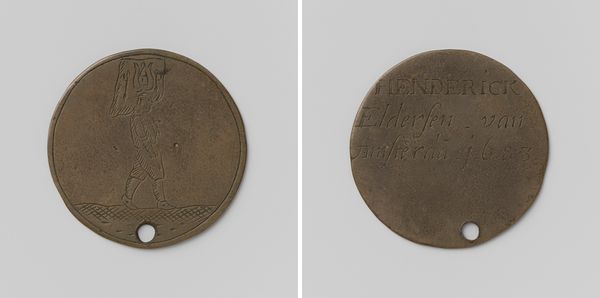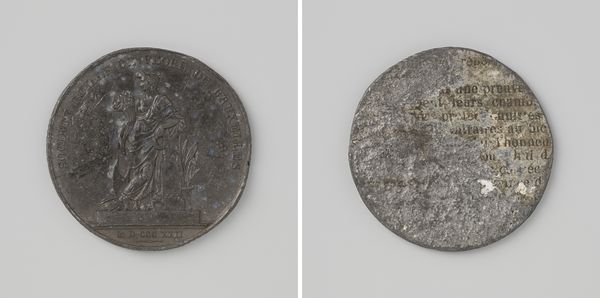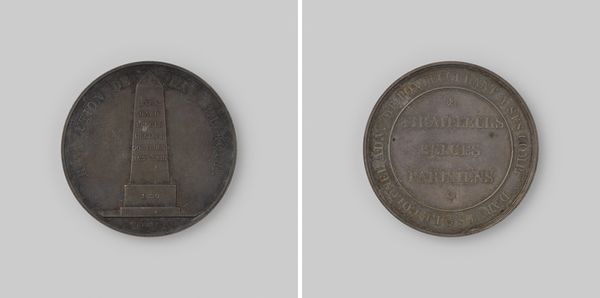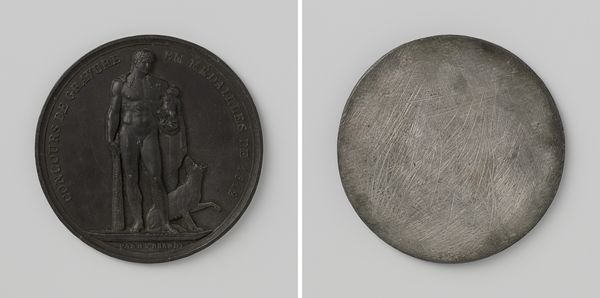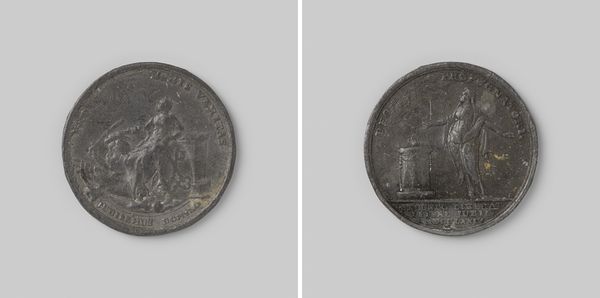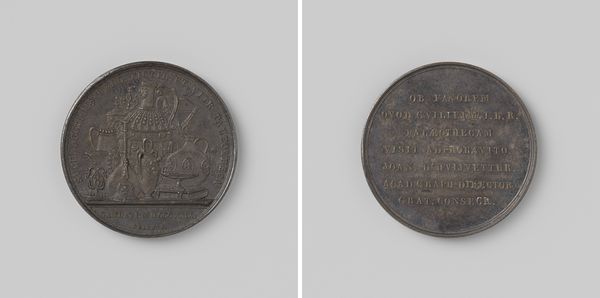
mixed-media, metal, relief, sculpture
#
portrait
#
medal
#
mixed-media
#
metal
#
relief
#
geometric
#
sculpture
#
history-painting
Dimensions: diameter 5 cm, weight 27.69 gr
Copyright: Rijks Museum: Open Domain
Curator: This is a metal relief sculpture from 1894 by Louis Eugène Mouchon, titled "Union du Commerce / Societe Philantropique." Editor: It feels heavy, both physically—considering it's metal—and thematically. The subdued tones suggest a somber reflection on the intersection of commerce and philanthropy. Curator: It is interesting to observe how this mixed-media medal embodies late 19th-century ideals. It invites analysis into what values were publicly promoted, perhaps more performatively than actually practiced, by unions of commerce. Editor: Right. And it's a double-edged commentary. While it appears to laud the philanthropic role of commercial entities, the context of labor exploitation in the late 19th century begs the question: At whose expense does this philanthropy exist? Were these unions actively ensuring better working conditions, fair wages? Curator: The production of commemorative medals such as this became increasingly popular due to technological advancements enabling mass production; so examining the industrial labor behind its manufacture provides some valuable historical insight. Who was laboring, under what conditions, to cast these emblems of commercial virtue? Editor: Precisely! And considering its purpose – likely to commemorate or celebrate specific figures or events within these organizations—it served to reinforce the social hierarchy and power dynamics of the time. The act of possessing or displaying such a medal became a statement of one's alignment with those structures. Curator: It is fascinating how the inscription’s promise of union, commerce, and philanthropy contrasts sharply with the labor practices of that era. Mouchon, intentionally or not, gives us a glimpse into social complexities surrounding the manufacturing and the social ethics of his time. Editor: So, it really offers insight into the constructed image that these commercial entities tried to project, versus the lived realities of the working class at the time. I suppose that contrast gives the object lasting relevance and some interesting modern reading. Curator: It serves as a somber reminder that examining not just an objects purpose, but how and by whom the materials were sourced, can drastically change our perception of that object's original intent.
Comments
No comments
Be the first to comment and join the conversation on the ultimate creative platform.
